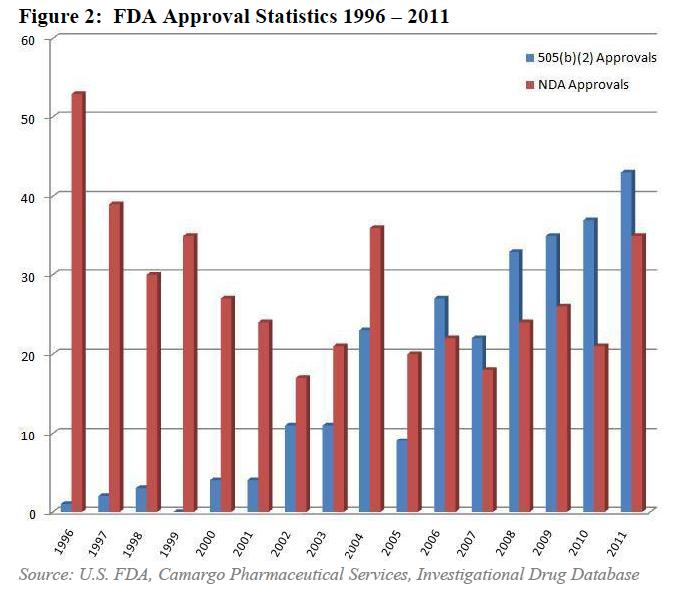The Path of Least Resistance: Repositioned Drugs Surpass New Brands
It was in 1984 when FDA first added the 505(b)(2) pathway for drug approval, a hybrid between the accelerated pathway for generic drug applications, and the standard de novo NDA pathway for proprietary drugs.
It was in 1984 when FDA first added the 505(b)(2) pathway for drug approval, a hybrid between the accelerated pathway for generic drug applications, and the standard de novo NDA pathway for proprietary drugs. But in the past 6 years, approvals received through the 505(b)(2) pathway have consistently outnumbered de novo NDAs.

Chart courtesy of Aegis Capital Corp
Why might we be seeing this change in the number of applications between 505(b)(2) and de novo? One obvious reason is the risk involved: “If you file a de novo NDA after phase 3, you still only have a 10-20% chance of getting it approved,” says Raghuram Selvaraju, managing director, head of healthcare equity research, Aegis Capital Corp. “If you file a 505(b)(2), you have a 40-70% chance of getting it approved,” The numbers clearly indicate that the 505(b)(2) is a safe bet and therefore, it has seen a dramatic uptick in the number of applications and subsequent approvals.
Indeed, the drugs seen taking the 505(b)(2) pathway are more often than not a repositioning of some kind. Many smaller biotechs, such as Anthera or IntelGenX, have articulated a strategy centered on developing drugs eligible for the 505(b)(2) pathway. Smaller companies and their investors often don’t have the resources necessary to recruit for and conduct big clinical trials; they don’t have as many shots on goal, or as much time to get across the finish line. Aris Persidis, president and co-founder of Biovista, a company focused on the 505(b)(2), adds, “In addition, the first to file patent regulations that will take effect in the US next year are making companies realize that they may be susceptible to competitors repositioning their own drugs. This, plus the patent cliff and the cost and risk reductions, are some of the key reasons behind the 505(b)(2) increase and interest in drug repositioning as a whole.”
The issue of “ever-greening” becomes a legitimate concern when you take all these factors into account. Are we able to assume that more and more companies will seek approval under the 505(b)(2) pathway, to mitigate risk and compete by funding projects that extend the patent life of top-selling brands? Will these companies, as a result, focus less on discovering and developing truly novel new drugs? Or is novelty in the eye of the beholder, i.e. the patient for whom a reformulated drug meets a previously unmet need?
With 505(b)(2) only granting a three-year exclusivity period, and with genomics revealing that we’ve exhausted all the easy targets for new medicines, the industry may quickly reach a saturation point in its quest to repackage all the blockbusters in a bid to extend profitability and stay in the race.
Pfizer, GSK Gain ACIP Recommendations for RSV and Meningococcal Vaccines
April 18th 2025The Centers for Disease Control and Prevention’s Advisory Committee on Immunization Practices voted to expand access to Pfizer’s respiratory syncytial virus vaccine Abrysvo for high-risk adults in their 50s and voted in favor of GSK’s meningococcal vaccine, Penmenvy, for streamlined adolescent protection.
Navigating Distrust: Pharma in the Age of Social Media
February 18th 2025Ian Baer, Founder and CEO of Sooth, discusses how the growing distrust in social media will impact industry marketing strategies and the relationships between pharmaceutical companies and the patients they aim to serve. He also explains dark social, how to combat misinformation, closing the trust gap, and more.